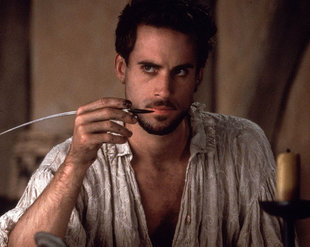Shakespeare’s counterfeiters
For centuries theories have cast doubt over whether the plays attributed to the Bard were actually written by the Stratford playwright
Did Shakespeare alone write all the plays that bear his name, or were they written by someone else, as many have speculated? Many names have been put forward over the years, from Bacon, De Vere or Marlowe to Sydney, Walter Raleigh, and even Queen Elizabeth I. Scepticism surrounding the authorship of the plays began in 1785, when James Wilmot began looking for documents and manuscripts by the author from Stratford-upon-Avon. When, alongside scholar James Corton Cowell, nothing was found, the rumour began that Shakespeare had not written the plays at all, and the men put forward the hypothesis that Sir Francis Bacon was their true author.
Contemporary professor James Shapiro showed that theory to be an invention, when he proved that Cowell had falsified documents. Yet, the Sir Francis Bacon theory is far from the only one. School teacher J.T. Looney (1870-1944), for example, put forward Edward de Vere, the 17th Earl of Oxford, as the real Shakespeare. The idea that either Bacon or De Vere could have been the real authors of Shakespeare’s work is based on the assumption that such magnificent plays with such linguistic richness could not have been penned by a man from the countryside with only a basic education.
It’s strange to see writers and thinkers of the stature of Sigmund Freud, Henry James and Mark Twain crediting such theories, as it is clear that William Shakespeare, son to John Shakespeare and Mary Arden, is without doubt the author of the works attributed to him. We have irrefutable proof, such as the First Folio of 1623, put together by his colleagues Heminges and Condell, who the author includes in his will. Or Ben Jonson’s Eulogy to the Bard in the same manuscript, which says of Shakespeare: “He was not of an age but for all time!” Or the dedications by his contemporaries on his bust in the Stratford church where he is buried, which compares him to King Nestor and the philosopher Socrates, and which says: “The earth buries him, the people mourn him, Olympus possesses him.”
What’s more, as time has gone by and Shakespeare’s fame has grown, scholars have continued to find more written proof of his existence. One such finding was in 1753, by lawyer Albany Wallis, who came across a document signed by Shakespeare in 1613: a deed for a house in London, in the Blackfriars district. That motivated Shakespeare’s main biographer of the time, Edmund Malone, to look for more documents, until he found a letter by Richard Quiney addressed to Shakespeare, his neighbour in Stratford. This led to something of a competition between scholars to unearth more documentation about the Bard.
One such was the collector William Ireland, who in 1794 scoured Stratford and surroundings for documents and manuscripts from the time of Shakespeare. The steward of Clopton House, on the outskirts of Stratford, told them that he had only recently burnt a pile of papers and letters with Shakespeare’s name on them. Ireland and his son William-Henry were astounded. Yet, Ireland’s son refused to give up and in frequenting a shop selling old parchments –according to Malone– he made friends with a wealthy gentleman –the mysterious H– who gave him permission to go through his archives. There he found a document from the Globe theatre with Shakespeare’s signature on it, which was authenticated by the Herald’s Office.
Encouraged by his find, William Henry returned to H’s house to continue his search. The result was a host of Shakespearean documents, among them a letter from Shakespeare to his wife Anne Hathaway, a receipt from the author to his colleague John Heminges, Shakespeare’s Profession of Protestant Faith, a deed dated 1611, Shakespeare’s correspondence with printer William Holmes, as well as letters between the playwright and the Earl of Southampton, believed to be the ’Fair Youth’ of Shakespeare’s Sonnets. There was even a letter from Queen Elizabeth I thanking Shakespeare for “the beautiful poems” he had sent her.
This avalanche of documents made Ireland famous. They were reproduced in all types of publications, while the main London intellectuals went to Ireland’s home to see the documents for themselves. However, the biggest discovery came in 1795, when William-Henry announced he had found the original manuscript of King Lear, which was different from the one then thought to be authentic. It caused a commotion in the literary world, leading Scottish lawyer and writer James Boswell, after examining the manuscript, to kiss it, kneel and declare: “How happy am I to have lived to the present day of discovery of this glorious treasure. I shall now go to my grave in peace.” He died three months later. In fact, so many people turned up to see the documents that Ireland began charging them, while the Prince of Wales asked him to come to the palace so he could also see them.
Yet, as is so often the case, complacency set in and William Henry’s ambition got the better of him, and he unveiled manuscripts for the plays Julius Caesar and Richard III, and finally even claimed he had found a previously unknown play by the Bard, Vortigern. William Henry had forged everything, of course, writing the forgeries on old parchment he had taken from the law office where he worked. The game was up and Malone, who had already voiced his suspicions, examined the documents and declared them to be forgeries, even though they had even convinced the experts. As Shakespeare himself said through the character of Antonio in the Merchant of Venice: “What a goodly outside falsehood hath!” Falsifying is easy, but as Ireland discovered keeping the lie going is the hardest part.




